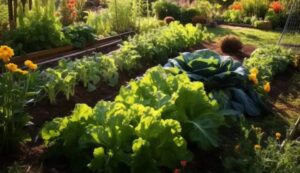
In the realm of sustainable gardening, the no-till method is revolutionizing how we cultivate our gardens. This approach not only nurtures the soil but also respects the intricate web of life beneath our feet. In this comprehensive guide, we’ll explore the compelling reasons behind adopting a no-till gardening approach and provide a detailed, step-by-step guide to help you create a thriving, productive garden without disrupting the soil structure.
I. The Philosophy Behind No-Till Gardening:
Understanding Soil Ecosystems :
Soil is not just a medium for plant growth; it’s a living, breathing ecosystem. Traditional tilling disrupts this ecosystem, destroying soil structure, and harming beneficial microorganisms. No-till gardening recognizes and preserves the complexity of soil life.
have roots that could interfere with your garden.
Step 2: Prepare the Ground
If starting on a lawn or area with existing vegetation, lay down cardboard or several layers of newspaper to suppress the grass and weeds. Wet the materials thoroughly to help them break down faster.
Step 3: Build Your Layers
On top of the cardboard or newspaper, add a thick layer of compost. This will serve as the primary growing medium for your plants. Add a layer of mulch on top to conserve moisture, regulate soil temperature, and further suppress weed growth.
Step 4: Plant Your Garden
Create small openings in the mulch layer to plant your seeds or seedlings. Ensure they have good contact with the compost layer beneath. For larger plants or root crops, you may need to remove more mulch to provide ample growing space.
Step 5: Water and Maintain
Water your garden as needed, focusing on the base of the plants. Over time, continue to add layers of compost and mulch to nourish your garden and maintain the soil structure.
No-till gardening is a testament to working in harmony with nature, fostering a vibrant, healthy ecosystem right in your backyard. By embracing this method, you’re choosing a path of sustainability, conservation, and respect for the intricate web of life beneath our feet. Embark on your no-till gardening journey and witness the transformation of your garden and the environment around you.





